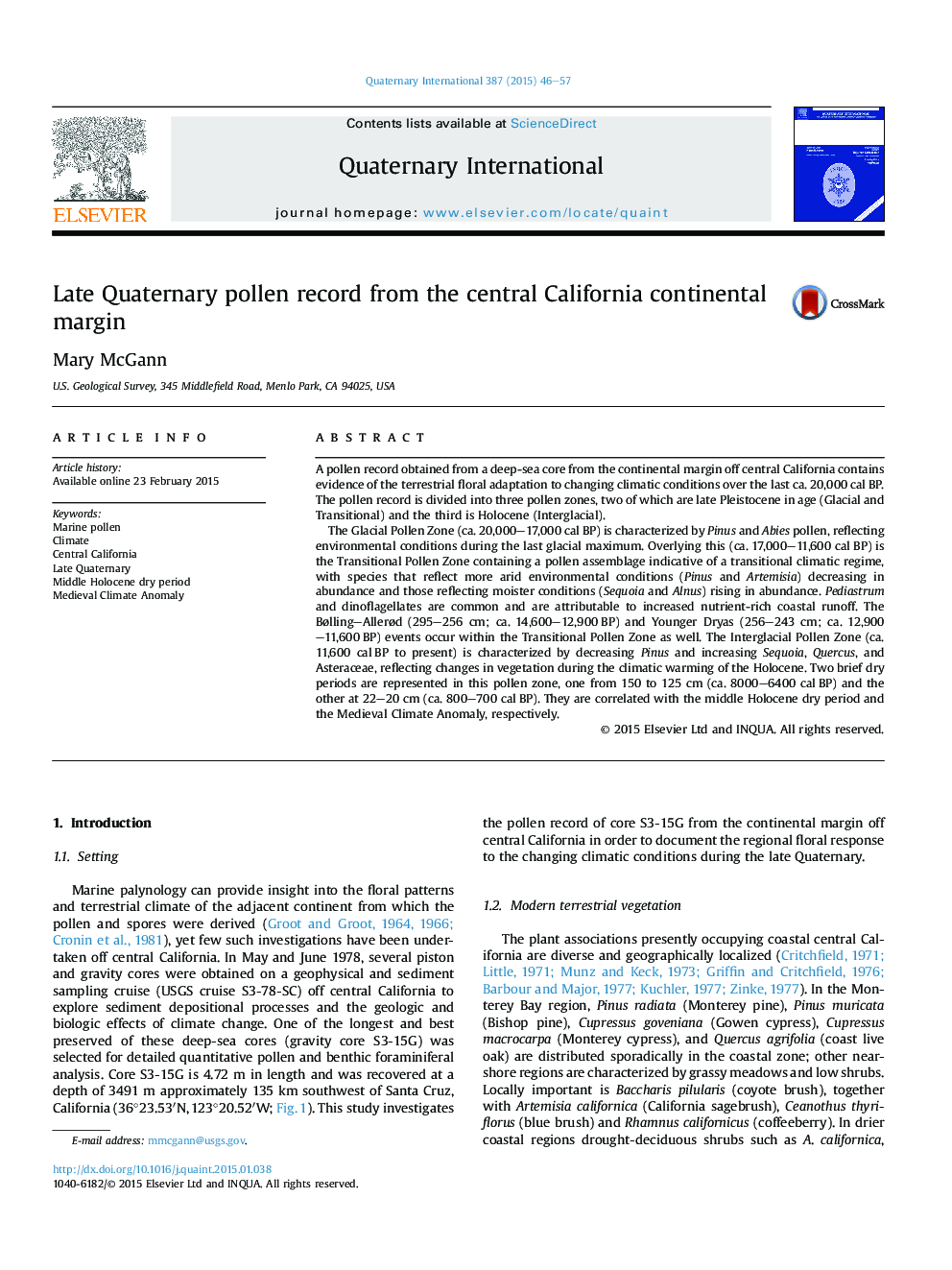| Article ID | Journal | Published Year | Pages | File Type |
|---|---|---|---|---|
| 1040544 | Quaternary International | 2015 | 12 Pages |
A pollen record obtained from a deep-sea core from the continental margin off central California contains evidence of the terrestrial floral adaptation to changing climatic conditions over the last ca. 20,000 cal BP. The pollen record is divided into three pollen zones, two of which are late Pleistocene in age (Glacial and Transitional) and the third is Holocene (Interglacial).The Glacial Pollen Zone (ca. 20,000–17,000 cal BP) is characterized by Pinus and Abies pollen, reflecting environmental conditions during the last glacial maximum. Overlying this (ca. 17,000–11,600 cal BP) is the Transitional Pollen Zone containing a pollen assemblage indicative of a transitional climatic regime, with species that reflect more arid environmental conditions (Pinus and Artemisia) decreasing in abundance and those reflecting moister conditions (Sequoia and Alnus) rising in abundance. Pediastrum and dinoflagellates are common and are attributable to increased nutrient-rich coastal runoff. The Bølling–Allerød (295–256 cm; ca. 14,600–12,900 BP) and Younger Dryas (256–243 cm; ca. 12,900–11,600 BP) events occur within the Transitional Pollen Zone as well. The Interglacial Pollen Zone (ca. 11,600 cal BP to present) is characterized by decreasing Pinus and increasing Sequoia, Quercus, and Asteraceae, reflecting changes in vegetation during the climatic warming of the Holocene. Two brief dry periods are represented in this pollen zone, one from 150 to 125 cm (ca. 8000–6400 cal BP) and the other at 22–20 cm (ca. 800–700 cal BP). They are correlated with the middle Holocene dry period and the Medieval Climate Anomaly, respectively.
